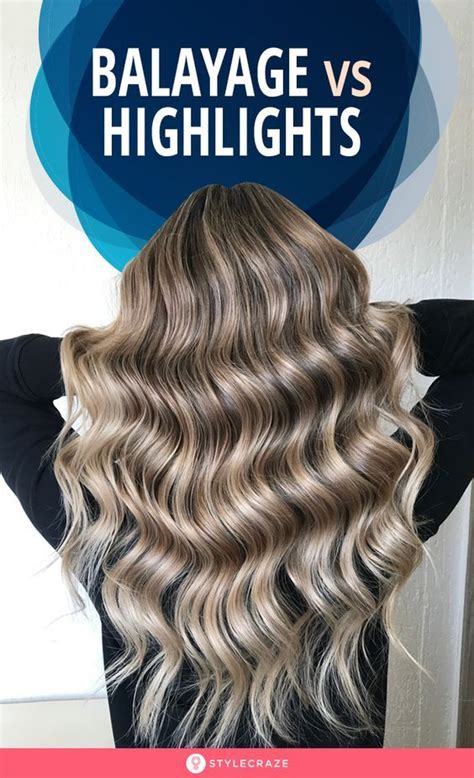Introduction
When it comes to transforming your hair color, two popular techniques that come to mind are balayage and highlights. Both methods add dimension and depth to your locks, but they differ in their application and results. This article delves into the intricacies of balayage vs highlights, empowering you to make an informed decision for your next hair makeover.

Balayage vs Highlights: Unveiling the Differences
Application Technique
-
Balayage: Derived from the French word “to sweep,” balayage involves painting color onto sections of hair with a brush, creating a more natural, blended effect. The color is typically applied freehand, resulting in soft and subtle transitions.
-
Highlights: Highlights are created by isolating strands of hair with foils or a cap and applying a lightener. This technique achieves more defined and contrasting streaks of color.
Appearance
-
Balayage: Balayage renders a more seamless and graduated color, mimicking the natural sun-kissed highlights often seen on children. It adds warmth and depth without creating obvious lines of demarcation.
-
Highlights: Highlights produce bolder, more noticeable streaks of color. The contrast between the highlighted and non-highlighted strands creates a more striking and dimensional look.
Maintenance
-
Balayage: Balayage requires less upkeep as the color gradually fades, creating a softer transition to your natural hair color as it grows out. Touch-ups may be needed every 3-6 months, depending on your desired level of color vibrancy.
-
Highlights: Highlights require regular touch-ups (every 6-8 weeks) to maintain their definition and prevent the appearance of roots. The harsh demarcation line can become more pronounced as the hair grows out.
Pros and Cons: Evaluating the Techniques
Balayage
Pros:
- Natural, gradual transition
- Low maintenance
- Adds warmth and depth
- Customizable to suit individual preferences
Cons:
- Can be more time-consuming
- May not create as much contrast as highlights
- Requires skilled application to achieve desired results
Highlights
Pros:
- Bold, defined contrast
- More noticeable transformation
- Can create a striking and eye-catching look
- Adds brightness and dimension
Cons:
- High maintenance
- Requires frequent touch-ups
- Can damage hair if not done correctly
- Can create an obvious line of demarcation
Which Technique Is Right for You?
The choice between balayage and highlights depends on your desired results, hair type, and lifestyle.
- Balayage: Ideal for those seeking a natural and low-maintenance color upgrade that adds subtle warmth and depth.
- Highlights: Better suited for individuals who prefer a bolder, more contrasting look that requires regular upkeep.
Cost Considerations
The cost of balayage and highlights varies depending on hair length, density, and the salon you visit. Typically, balayage is more expensive as it requires a higher level of skill and takes longer to apply. Highlights, on the other hand, are often more affordable as the technique is more straightforward.
Frequently Asked Questions
- Can I get balayage on short hair? Yes, balayage can be customized for any hair length, including short hair. However, the results may be less noticeable.
- Can I do balayage at home? While it is possible to attempt balayage at home, it is highly recommended to seek a professional colorist to ensure proper application and desired results.
- How long does balayage last? Balayage can last anywhere from 3 to 6 months, depending on hair growth rate and the maintenance routine.
- Which technique is less damaging to hair? Balayage is generally considered less damaging as it involves less chemical processing than highlights.
Conclusion
Balayage and highlights are both versatile hair coloring techniques that offer unique benefits. Understanding the differences between the techniques empowers you to make an informed decision that aligns with your desired results and lifestyle. Whether you crave a natural, sun-kissed glow or a bold and eye-catching transformation, there’s a technique to elevate your hair and boost your confidence.
